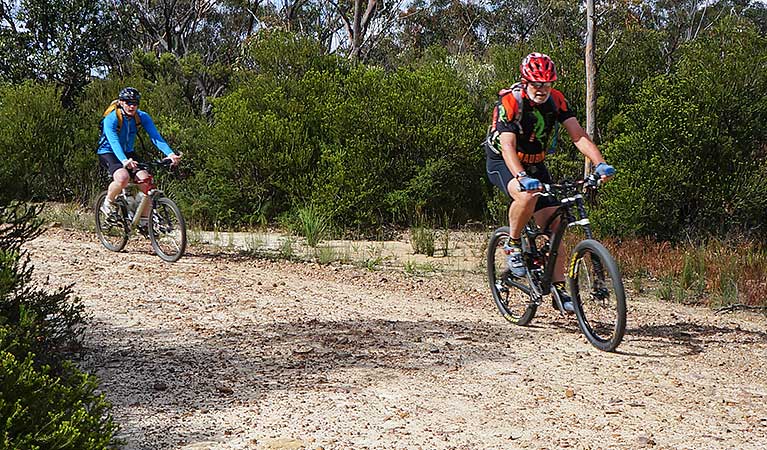Woodford Station to Murphys Glen campground
Glenbrook area in Blue Mountains National Park
Overview
Mountain bike or drive Murphys Road from Woodford Station to Murphys Glen campground in this quiet area of Blue Mountains National Park. If you're driving, it's a 1km walk to the campground.
- Distance
- 14km return
- Please note
- Allow 2 to 3 hours if cycling the 14km return route from Woodford Station.
- It's 3km from the station to the park boundary, then 4km to the campground. Cars must stop at the locked gate 1km from the campground.
- There's a steep descent into Murphys Glen campground.
- Drivers please watch out for bike riders and walkers.
- Check the weather before you set out as Murphys Road may close at short notice, due to wet weather or fire conditions.
This tranquil 4WD and mountain bike route leads along Bedford and Murphys Roads from Woodford Station to Murphys Glen campground. Cars must stop at the locked gate 1km from the campground. Easily accessed from the Great Western Highway, it's a great nature escape in Blue Mountains National Park.
The unsealed road travels through unspoilt heathland and along a narrow ridge top with scenic views across Cumberland Plain. You might be sharing the track with swamp wallabies and goannas so keep an eye out. As the road descends into Murphys Glen campground, the heath gives way to majestic tall forest of blue gums and turpentine. Whether you're camping overnight or simply stopping for a picnic, be sure to stretch your legs on the nearby Turpentine track.
Spring is a great time to visit as the seemingly harsh landscape, as the sandstone rock platforms erupt with an extravagant wildflower display. Hardy mallee ash, banksia and trigger plants, growing in the sandstone rock clefts, dazzle with vibrant blooms.
Take a virtual tour of Woodford to Murphys Glen trail captured with Google Street View Trekker.
Map
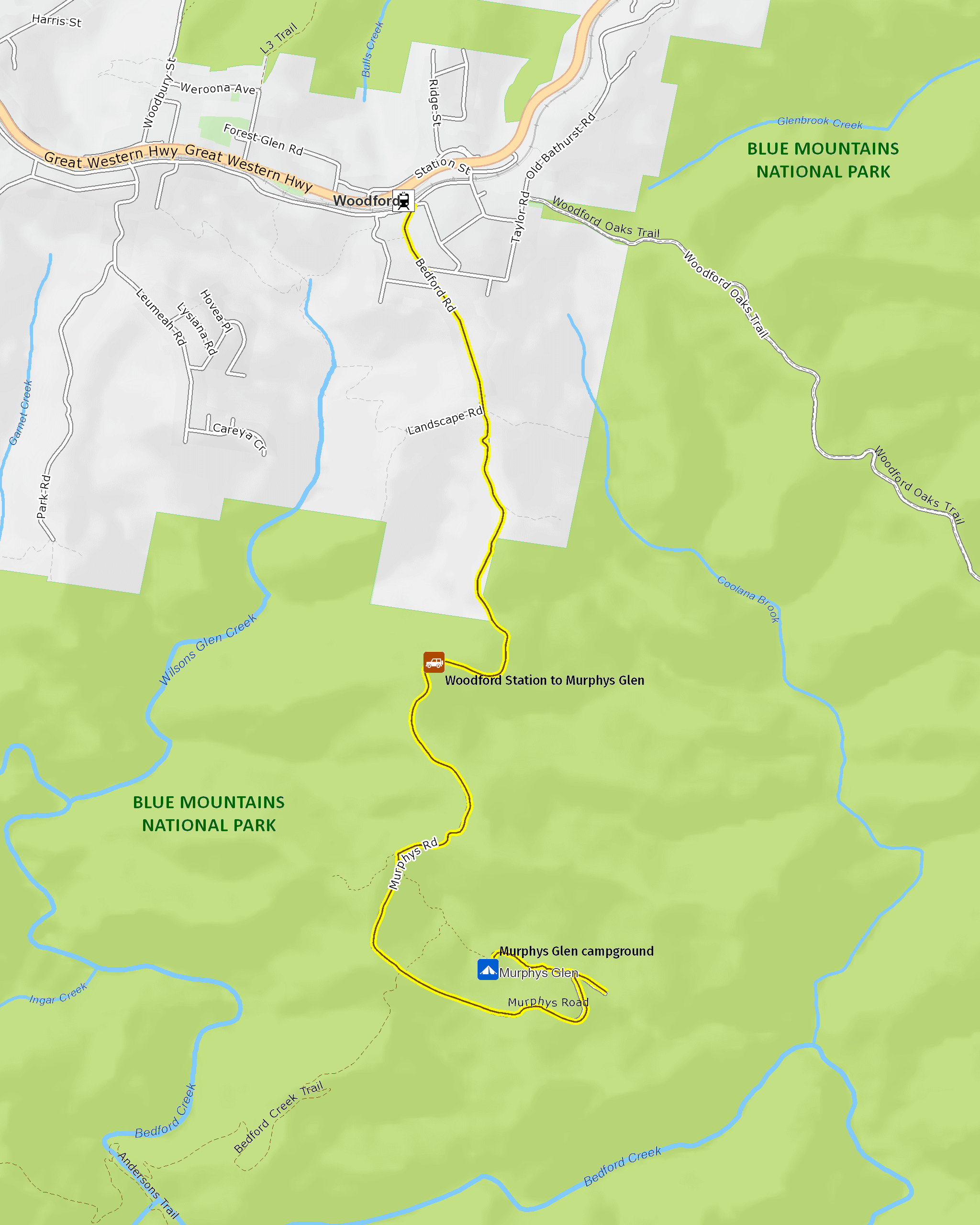
Map legend

Local alerts
For the latest updates on fires, closures and other alerts in this area, see https://www.nationalparks.nsw.gov.au/things-to-do/4wd-touring-routes/woodford-station-to-murphys-glen-campground/local-alerts
Park info
- in the Glenbrook area of Blue Mountains National Park in the Sydney and surrounds region
- From the first Sunday in October to the first Sunday in April: park gates are open 8.30am to 7pm.
- Rest of the year: park gates are open 8.30am to 6pm.
-
$8 per vehicle per day applies at the Bruce Road entrance to the Glenbrook area. You can also pay for your visit via the Park’nPay app.
Buy annual pass.
Visitor info
All the practical information you need to know about Woodford Station to Murphys Glen campground.
Getting there and parking
Get driving directions
Woodford Station to Murphys Glen campground is between Glenbrook and Wentworth Falls, in Blue Mountains National Park. To get there:
From Sydney by car:
- Head west on the M4 and Great Western Highway
- Turn onto The Appian Way before you reach Woodford and drive across the railway bridge
- Turn right on to Railway Parade and veer left on to Bedford Road
- Continue around 2km to the gate at the national park boundary (which may be locked in wet weather and fire danger) where Murphys Road begins
- From here, it’s around 3km to the carpark which has a locked gate.
- From the carpark, walk 1km past the locked gate and down the road, taking the left hand branch at the bottom.
From Woodford Station by bike:
- From the train station exit south to Railway Parade and turn left.
- After 100m turn right on Redford Rd and ride around 2km to the gate at the national park boundary (which may be locked in wet weather and fire danger).
- From here, it’s around 4km to Murphys Glen campground. Bikes are permitted past the locked gate.
Road quality
Check conditions before you set out. While 2WD vehicles can access the carpark 1km from the campground, a 4WD is recommended because natural surface road conditions can vary. especially after rain.
- Unsealed roads
Vehicle access
- Most roads require 4WD vehicle
Weather restrictions
- Dry weather only
Parking
Parking is available along Murphys fire trail, near Murphys Glen campground.
Facilities
- Toilets are located at Murphys Glen campground.
- There are no bins so you'll need to take your rubbish with you.
Maps and downloads
Permitted
Cycling
Prohibited
Gathering firewood
Generators
Pets
Pets and domestic animals (other than certified assistance animals) are not permitted. Find out which regional parks allow dog walking and see the pets in parks policy for more information.
If you're travelling through a national park or reserve on a public road you can have pets inside your vehicle. However, you must keep them inside your vehicle while driving through national parks or reserves. You must also comply with any conditions in the park’s plan of management, and you cannot stop to visit the park or use park facilities (unless for safety reasons, or to use publicly accessible toilets).
Smoking
NSW national parks are no smoking areas.
Learn more
Woodford Station to Murphys Glen campground is in Glenbrook area. Here are just some of the reasons why this park is special:
Aboriginal rock art
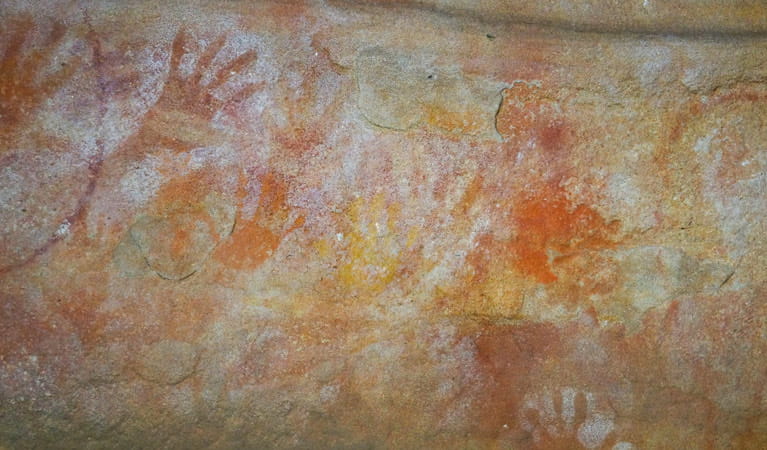
Red Hands Cave is one of the best Aboriginal stencil galleries in Sydney and its surrounds. Accessed via the 8km Red Hands Cave loop walk, it’s the most accessible Aboriginal culture in Blue Mountains National Park. The layers of earthy reds, yellows and whites of the hand prints are still vibrant. Among several applied techniques, the artists would chew a mix of ochre and water and blow it over a hand resting on the wall, forming a stencil.
- Red Hands Cave Red Hands Cave in Blue Mountains National Park is one of the best showcases of Aboriginal rock art in the area. It's reached via Red Hands Cave loop walking track.
- Red Hands Cave walking track - Blue Mountains National Park Red Hands Cave walking track, in Blue Mountains National Park, offers impressive Aboriginal stencil art with picnicking and birdwatching, near Glenbrook.
Ancient landscapes
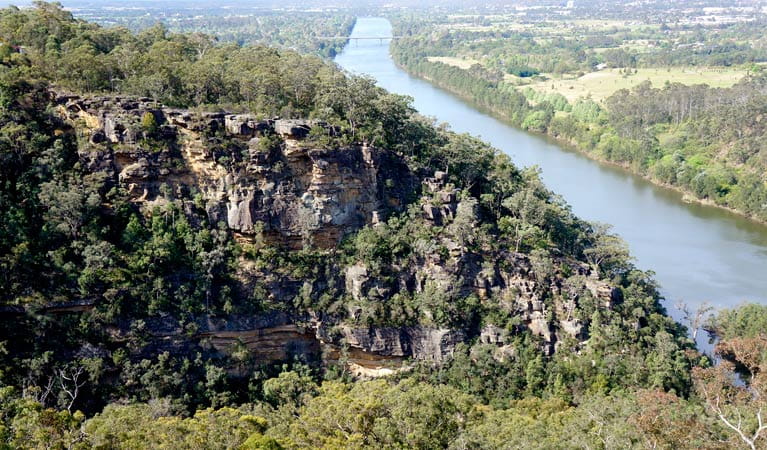
Lookouts like Portal are a great place to see the layers of geology in the Blue Mountains. Around 60 to 80 million years ago, Hawkesbury sandstone from the Sydney Basin was uplifted to form a plateau 50 to 200m above the coastal plain. Past volcanic activity can also be seen at Euroka and Murphys Glen campgrounds. These sit on old volcanic pipes, called diatremes, that blasted molten lava to the surface over 200 million years ago. Erosion of the diatreme at Euroka has left saucer shaped depressions and rich soil, where tall trees thrive.
- Glenbrook Gorge track Challenging Glenbrook Gorge track offers rock-hopping along a creek bed in beautiful bushland, past an historic railway tunnel, in Blue Mountains National Park.
- Jack Evans walking track The challenging Jack Evans walking track offers swimming, rock-hopping, wildflowers in the Blue Labyrinth region of Blue Mountains National Park, near Glenbrook.
- Portal lookout Wheelchair-accessible Portal lookout offers gorge and river views with abseiling and climbing options, near Western Sydney, in Blue Mountains National Park.
- Women's Blue Mountains trail running sessions Develop your trail running skills on a women’s training session with Serotonin Running. Boost your fitness and learn good technique in the World Heritage surrounds of Blue Mountains National Park.
Activities at your fingertips
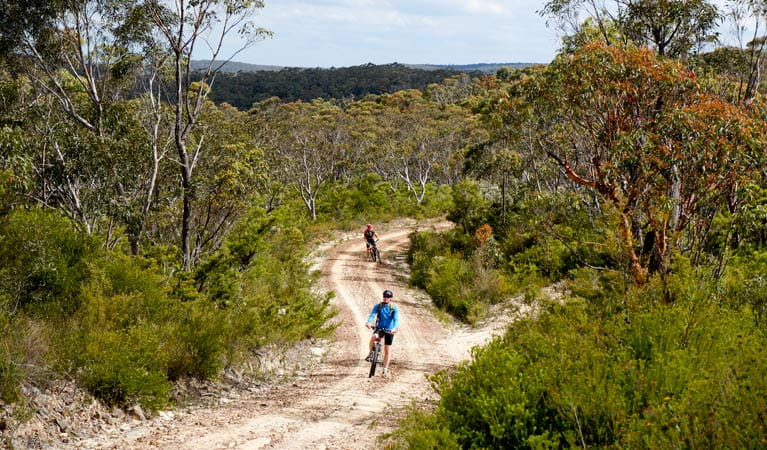
You don’t have to go far from the carpark to find a walk, riding trail, scenic lookout or picnic spot. Most of the roads are suitable for 2WD vehicles, so enjoy the drive as you make your way to Nepean lookout or the wheelchair-accessible Portal lookout. Glenbrook's well-maintained trails are favourites with mountain bikers and trail runners, who make a beeline for the Woodford-Oaks trail, Bennetts Ridge, and Murphys trail. If you prefer to relax, Euroka and Murphys Glen campgrounds provide low-key camping facilities without having to wander too far from Sydney.
- Portal lookout Wheelchair-accessible Portal lookout offers gorge and river views with abseiling and climbing options, near Western Sydney, in Blue Mountains National Park.
- Woodford – Oaks trail Cycling the Woodford – Oaks trail offers dazzling scenic views, heath and delightful picnicking near Glenbrook, in Blue Mountains National Park.
Greater Blue Mountains World Heritage
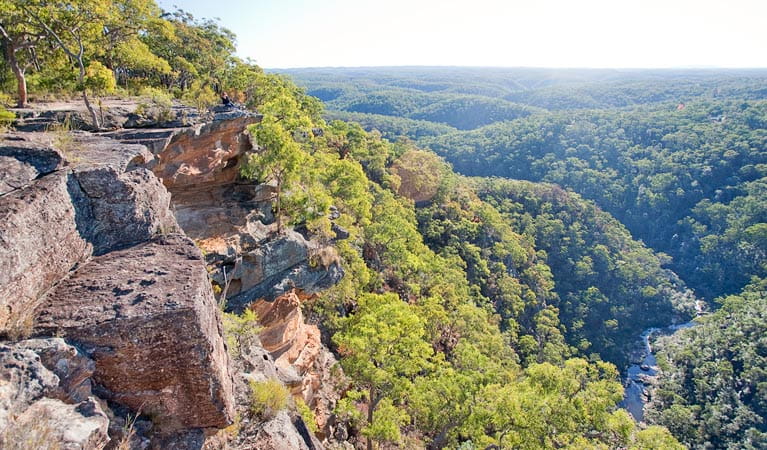
Blue Mountains National Park is 1 of 8 national parks and reserves that make up the Greater Blue Mountains Area World Heritage Property. In 2000, UNESCO recognised the area's outstanding geology, biodiversity, and Aboriginal significance. The are lies within the Country of the Darug, Gundungurra, Wiradjuri, Darkinjung, Wanaruah and Dharawal People. With 1 million hectares of rugged plateaux, sheer cliffs and deep gorges, it protects unique ecosystems teeming with rare plants and animals. Over 95 species of eucalypt trees have evolved here over millions of years, making it the most diverse eucalypt forest in the world. Greater Blue Mountains driving route is a great way to see this ancient wilderness right on Sydney doorstep. Glenbrook is the eastern gateway to this ancient wilderness right on Sydney doorstep.
- Jack Evans walking track The challenging Jack Evans walking track offers swimming, rock-hopping, wildflowers in the Blue Labyrinth region of Blue Mountains National Park, near Glenbrook.
- Nepean lookout With great river views of Fairlight Gorge, Nepean lookout boasts birdwatching and scenic wildflowers on a sightseeing car tour in Glenbrook, Blue Mountains National Park.
Plants and animals protected in this park
Animals
-
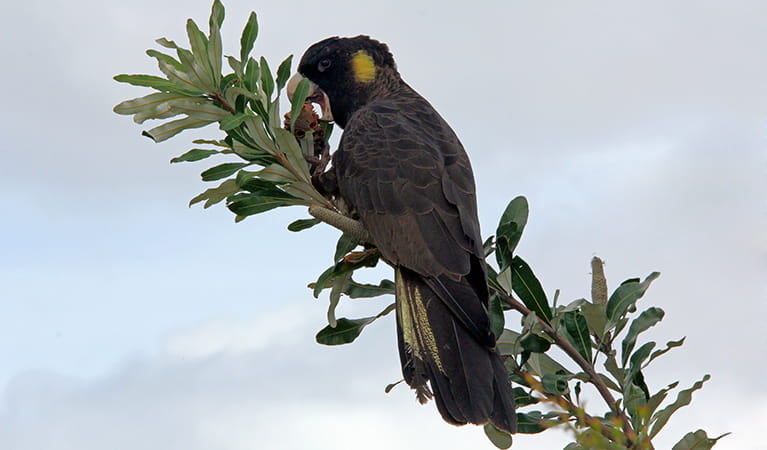
Yellow-tailed black cockatoo (Calyptorhynchus funereus)
The yellow-tailed black cockatoo is one of the largest species of parrot. With dusty-black plumage, they have a yellow tail and cheek patch. They’re easily spotted while bird watching, as they feed on seeds in native forests and pine plantations.
-
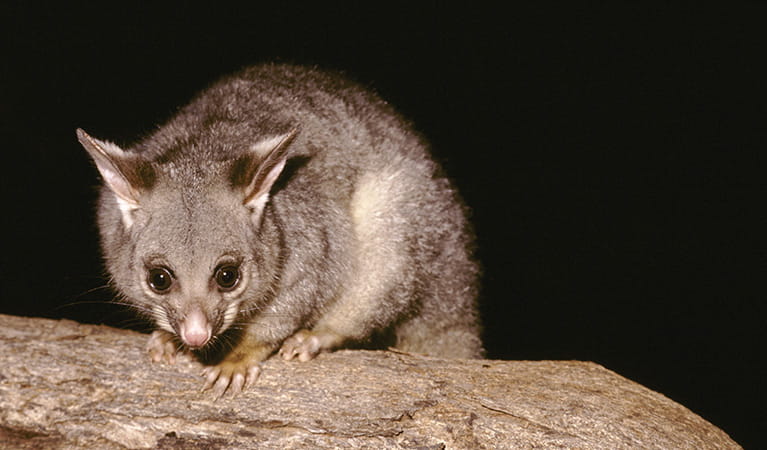
Common brushtail possum (Trichosurus vulpecula)
One of the most widespread of Australian tree-dwelling marsupials, the common brushtail possum is found across most of NSW in woodlands, rainforests and urban areas. With strong claws, a prehensile tail and opposable digits, these native Australian animals are well-adapted for life amongst the trees.
-

Swamp wallaby (Wallabia bicolor)
The swamp wallaby, also known as the black wallaby or black pademelon, lives in the dense understorey of rainforests, woodlands and dry sclerophyll forest along eastern Australia. This unique Australian macropod has a dark black-grey coat with a distinctive light-coloured cheek stripe.
-
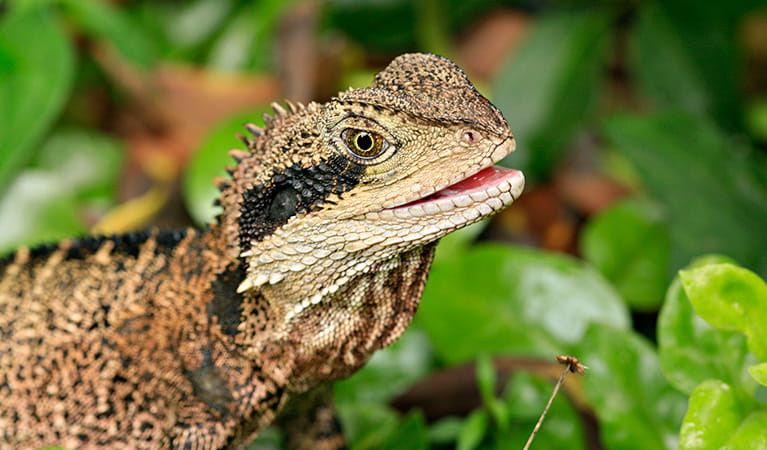
Eastern water dragon (Intellagama lesueurii lesueurii)
The eastern water dragon is a subaquatic lizard found in healthy waterways along eastern NSW, from Nowra to halfway up the Cape York Pensinsula. It’s believed to be one of the oldest of Australian reptiles, remaining virtually unchanged for over 20 million years.
-
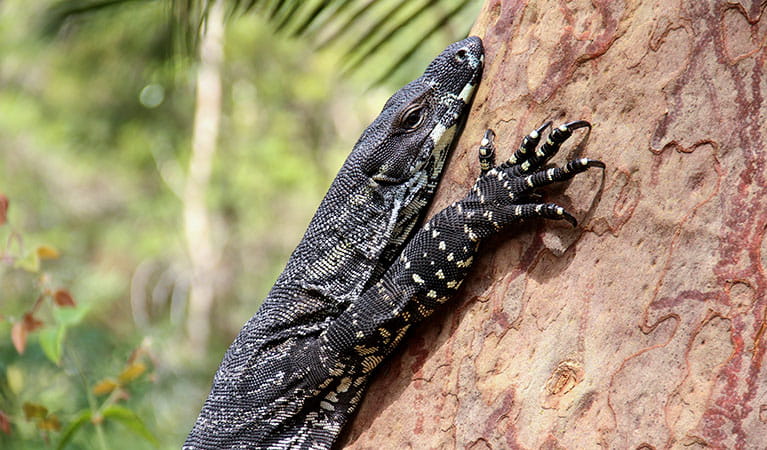
Lace monitor (Varanus varius)
One of Australia’s largest lizards, the carnivorous tree-dwelling lace monitor, or tree goanna, can grow to 2m in length and is found in forests and coastal tablelands across eastern Australia. These Australian animals are typically dark blue in colour with whitish spots or blotches.
-
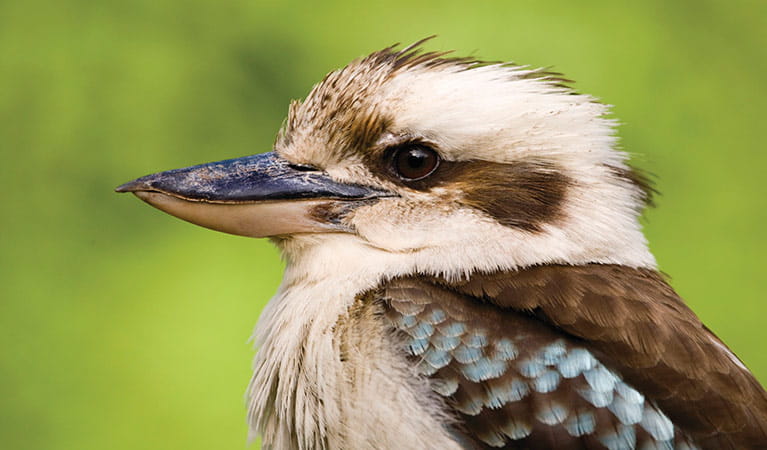
Kookaburra (Dacelo novaeguineae)
Of the 2 species of kookaburra found in Australia, the laughing kookaburra is the best-known and the largest of the native kingfishers. With its distinctive riotous call, the laughing kookaburra is commonly heard in open woodlands and forests throughout NSW national parks, making these ideal spots for bird watching.
-
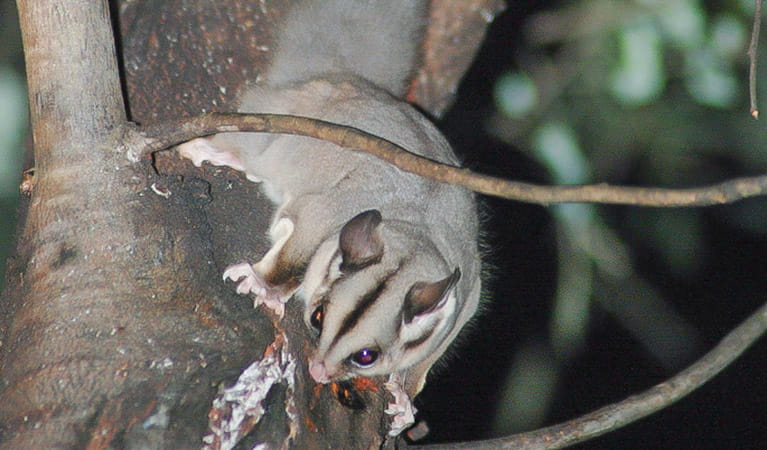
Sugar glider (Petaurus breviceps)
The sugar glider is a tree-dwelling Australian native marsupial, found in tall eucalypt forests and woodlands along eastern NSW. The nocturnal sugar glider feeds on insects and birds, and satisfies its sweet tooth with nectar and pollens.
-

Superb lyrebird (Menura novaehollandiae)
With a complex mimicking call and an elaborate courtship dance to match, the superb lyrebird is one of the most spectacular Australian animals. A bird watching must-see, the superb lyrebird can be found in rainforests and wet woodlands across eastern NSW and Victoria.
-
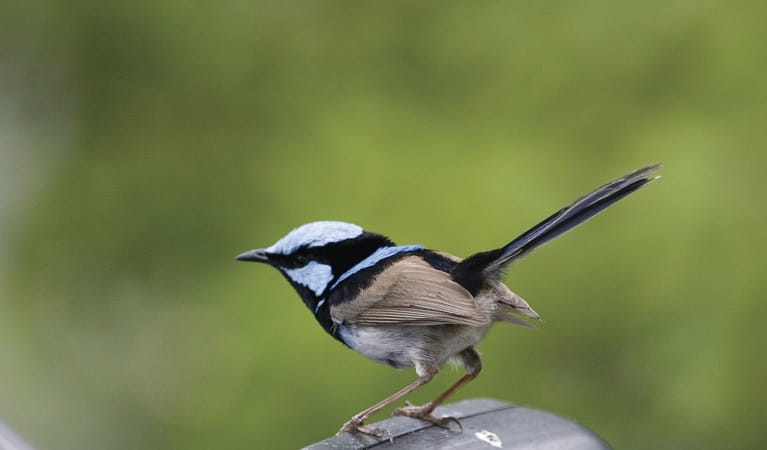
Superb fairy wren (Malurus cyaneus)
The striking blue and black plumage of the adult male superb fairy wren makes for colourful bird watching across south-eastern Australia. The sociable superb fairy wrens, or blue wrens, are Australian birds living in groups consisting of a dominant male, mouse-brown female ‘jenny wrens’ and several tawny-brown juveniles.
Plants
-
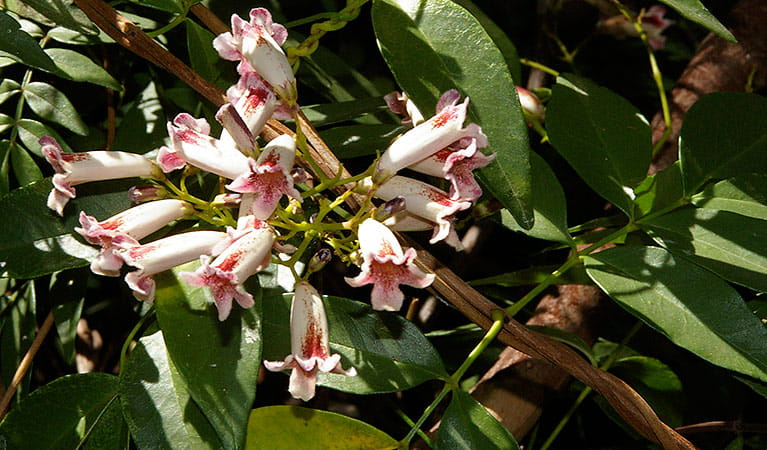
Wonga wonga vine (Pandorea pandorana)
The wonga wonga vine is a widespread vigorous climber usually found along eastern Australia. A variation of the plant occurs in the central desert, where it resembles a sprawling shrub. One of the more common Australian native plants, the wonga wonga vine produces bell-shaped white or yellow flowers in the spring, followed by a large oblong-shaped seed pod.
-
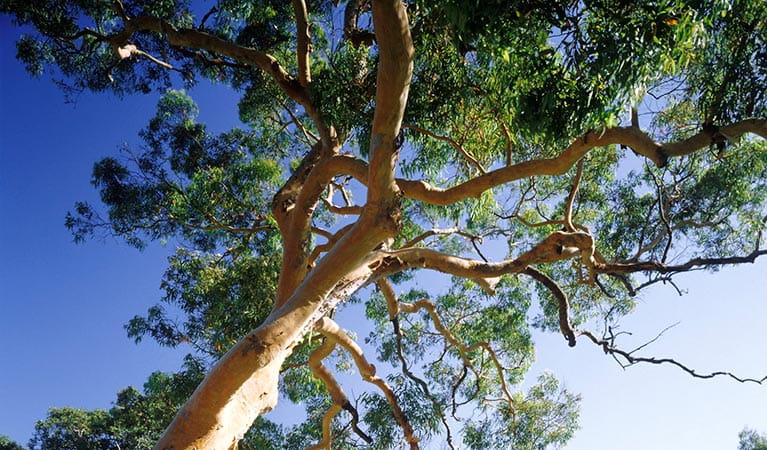
Smooth-barked apple (Angophora costata)
Smooth-barked apple gums, also known as Sydney red gum or rusty gum trees, are Australian native plants found along the NSW coast, and in the Sydney basin and parts of Queensland. Growing to heights of 15-30m, the russet-coloured angophoras shed their bark in spring to reveal spectacular new salmon-coloured bark.
-
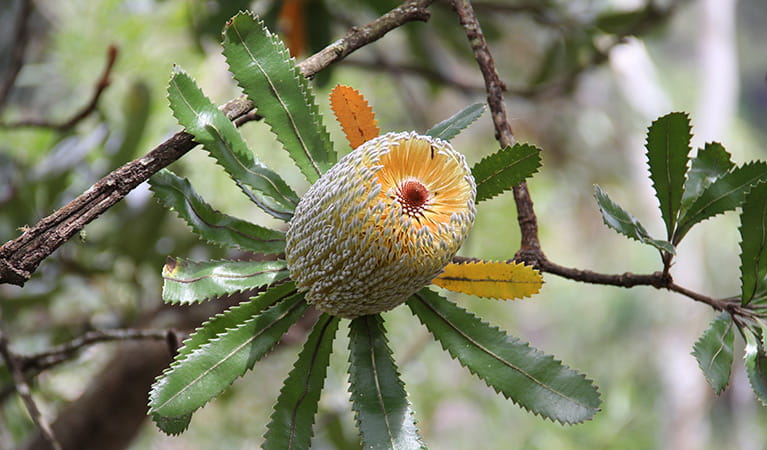
Old man banksia (Banksia serrata)
Hardy Australian native plants, old man banksias can be found along the coast, and in the dry sclerophyll forests and sandstone mountain ranges of NSW. With roughened bark and gnarled limbs, they produce a distinctive cylindrical yellow-green banksia flower which blossoms from summer to early autumn.
-
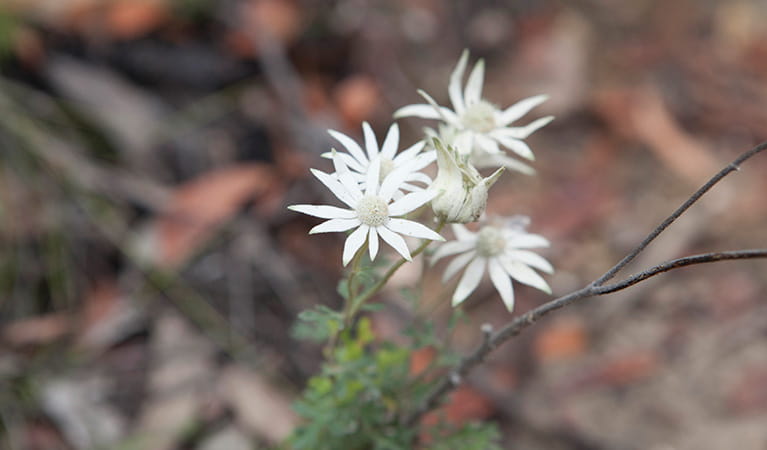
Flannel flower (Actinotus helianthi)
The delicate flannel flower is so named because of the soft woolly feel of the plant. Growing in the NSW south coast region, extending to Narrabri in the Central West and up to south-east Queensland, its white or pink flowers bloom all year long, with an extra burst of colour in the spring.
-
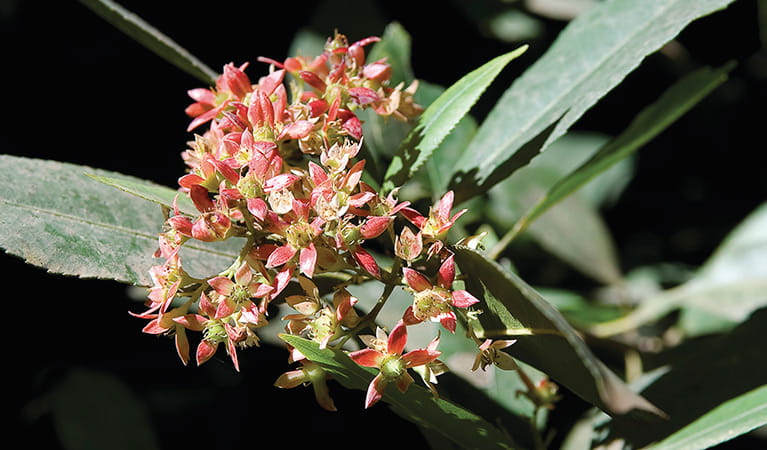
Coachwood (Ceratopetalum apetalum)
Coachwood trees are Australian native plants that grow in warm temperate rainforests along coastal NSW. Also known as scented satinwood, the mottled grey bark of the coachwood has horizontal markings and a delicate fragrance.
-
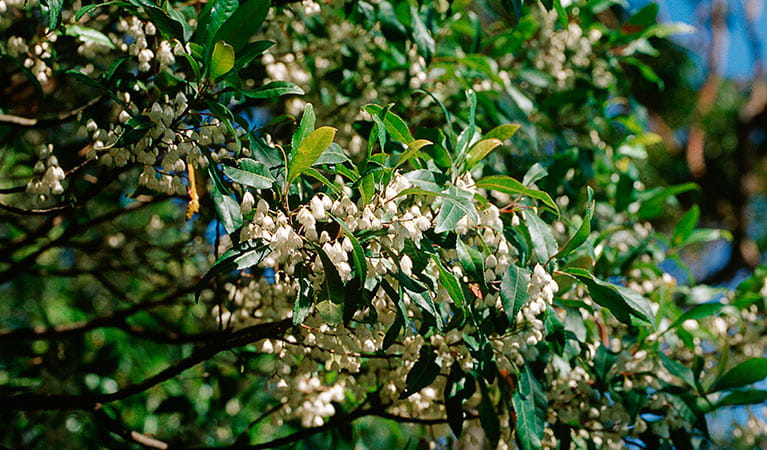
Blueberry ash (Elaeocarpus reticulatus)
The blueberry ash is a rainforest shrub which produces blue olive-shaped berries and spectacular bell-shaped flowers, which often appear on the plant together. It is a tall slender shrub or small tree found in rainforest, tall eucalypt forest and coastal bushland in eastern NSW, south-east Queensland and Victoria.
-

Grass tree (Xanthorrea spp.)
An iconic part of the Australian landscape, the grass tree is widespread across eastern NSW. These Australian native plants have a thick fire-blackened trunk and long spiked leaves. They are found in heath and open forests across eastern NSW. The grass tree grows 1-5m in height and produces striking white-flowered spikes which grow up to 1m long.
-
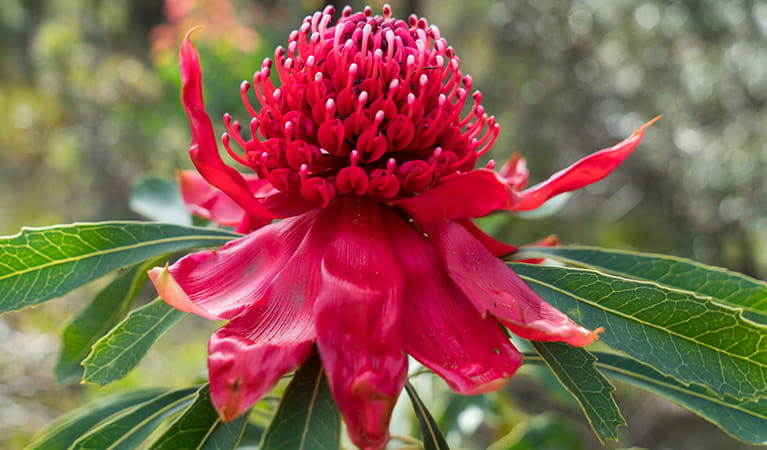
Waratah (Telopea speciosissima)
The beautiful waratah is not only the NSW floral emblem, it's also one of the best-known Australian native plants. This iconic Australian bush flower can be found on sandstone ridges around Sydney, in nearby mountain ranges and on the NSW South Coast. The waratah has a vibrant crimson flowerhead, measuring up to 15cm across, and blossoms in spring.

